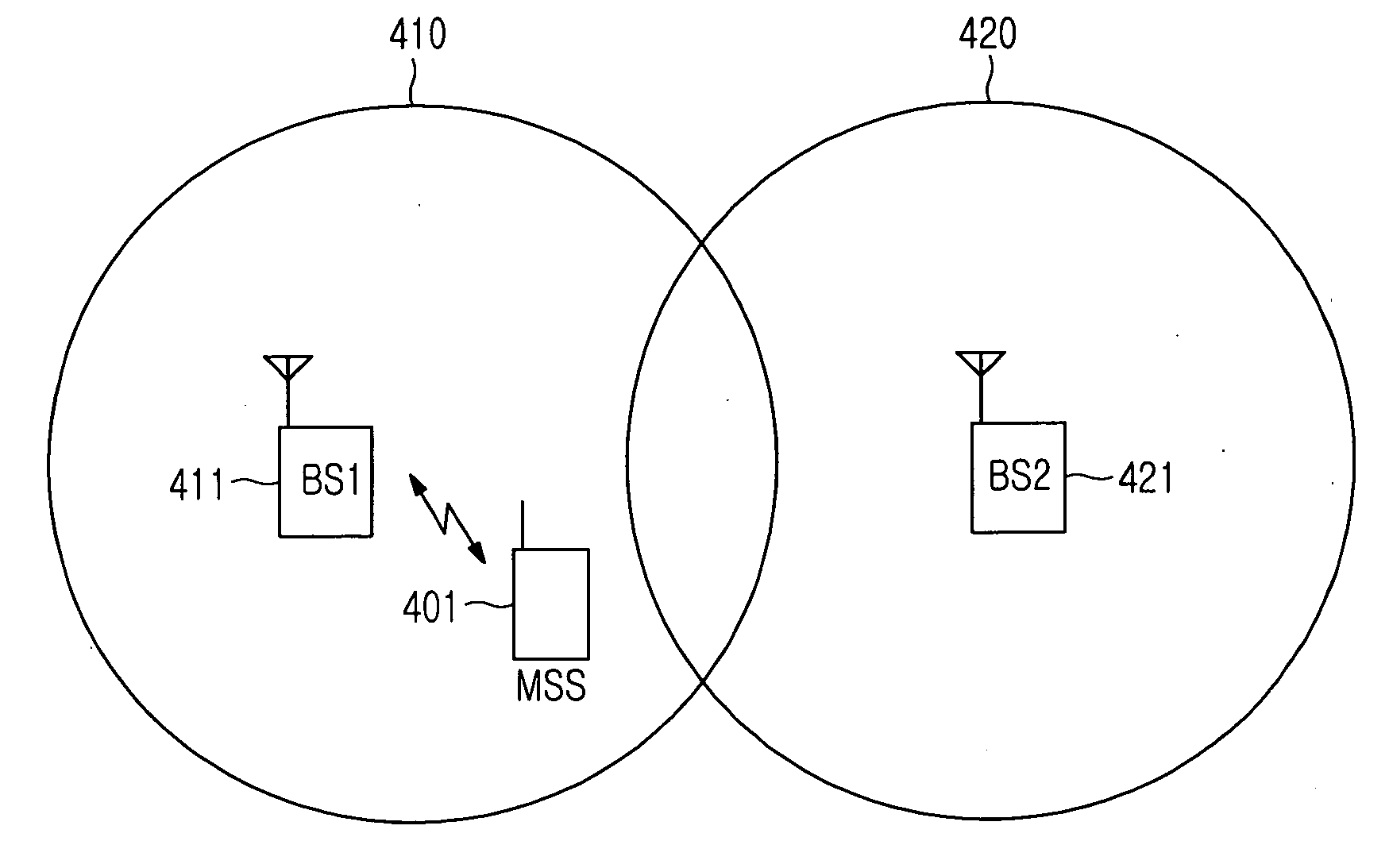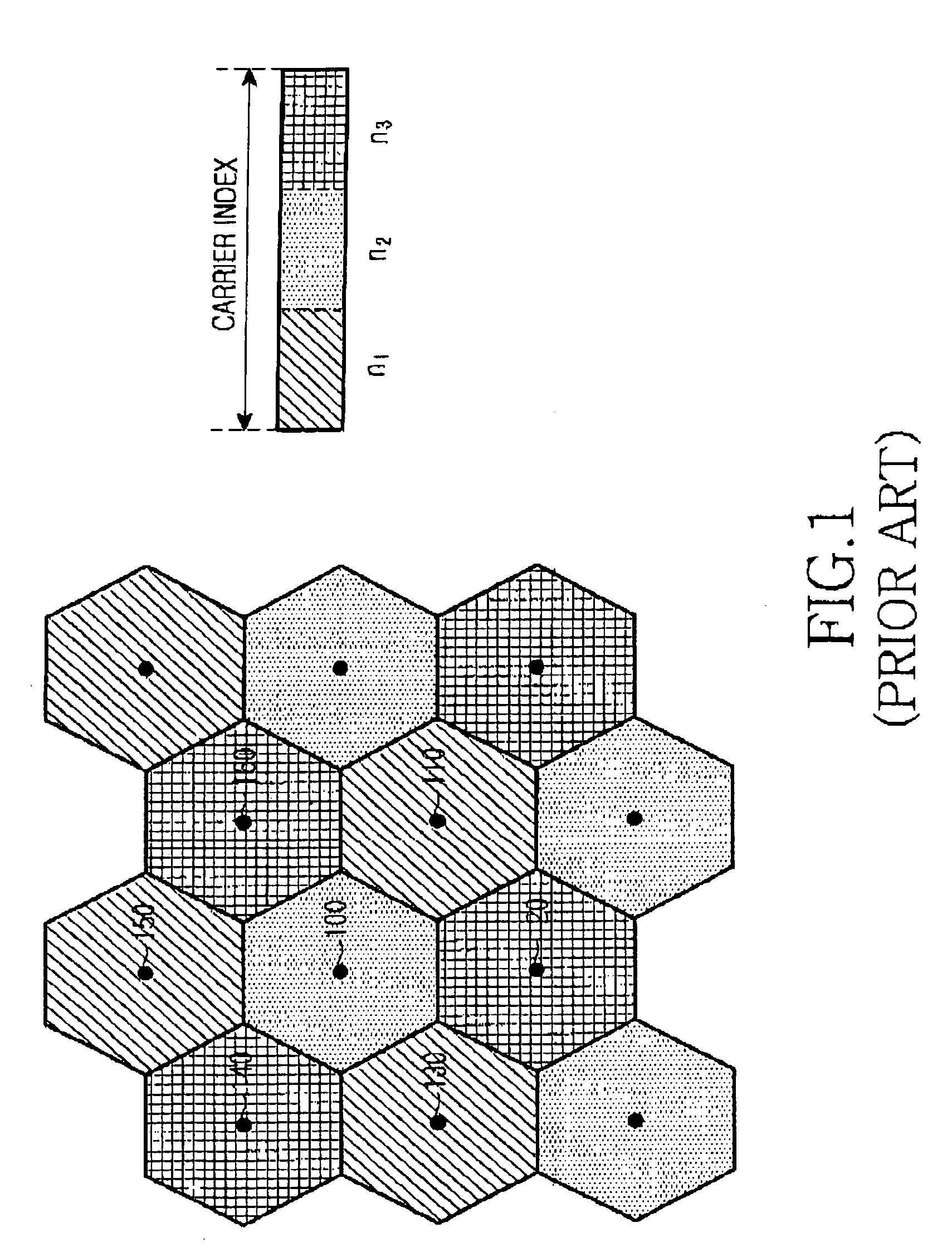Method and apparatus for allocating channels in an orthogonal frequency division multiple access system
a technology of orthogonal frequency division and multiple access, applied in the direction of transmission path sub-channel allocation, digital transmission, wireless communication, etc., can solve the problems of increasing the number of neighboring base stations, increasing the frequency reuse factor, and inevitably using the ofdma schem
- Summary
- Abstract
- Description
- Claims
- Application Information
AI Technical Summary
Benefits of technology
Problems solved by technology
Method used
Image
Examples
first embodiment
[0035] A first embodiment provides a method in which a base station varies a safety channel frequency with time every frame or (predetermined number of frames) except during a handover as will be described below. For example, while a subscriber station in handover operation moves to a target base station (i.e., while handover to a target base station is being achieved), a safety channel frequency is fixed. For the other intervals, the safety channel frequency is continuously varied.
[0036] A second embodiment provides a method in which a base station fixedly uses a safety channel frequency unless the base station uses the same safety channel frequency as a neighbor base station does. Because the base station fixedly uses a safety channel frequency in this manner, a subscriber station in handover operation can continuously communicate with the base station while moving to a target base station, and prevent interference to other users of the target base station. In addition, when there...
second embodiment
[0042] In the present invention, a base station continuously uses the same safety channel frequency resource unless it allocates the same safety channel frequency resource as that which are used by a neighbor base station. Therefore, FIG. 3 shows a frame structure in which the same frequency resources are maintained. That is, the same safety channel frequency resources are allocated in both an nth frame 210 and an (n+1)th frame 220. Because the same allocation is maintained even in the next frame, the base station and the subscriber stations can simply acquire safety channel information in the next frame.
[0043] Base stations may be equal to each other or different from each other in terms of the number of the safety channel frequencies, or safety channels. In the present invention, the number of the safety channels is not particularly limited.
[0044] A detailed description will now be made of occurrence of a subscriber station's handover in an OFDMA system having the safety channel ...
PUM
 Login to View More
Login to View More Abstract
Description
Claims
Application Information
 Login to View More
Login to View More - R&D
- Intellectual Property
- Life Sciences
- Materials
- Tech Scout
- Unparalleled Data Quality
- Higher Quality Content
- 60% Fewer Hallucinations
Browse by: Latest US Patents, China's latest patents, Technical Efficacy Thesaurus, Application Domain, Technology Topic, Popular Technical Reports.
© 2025 PatSnap. All rights reserved.Legal|Privacy policy|Modern Slavery Act Transparency Statement|Sitemap|About US| Contact US: help@patsnap.com



